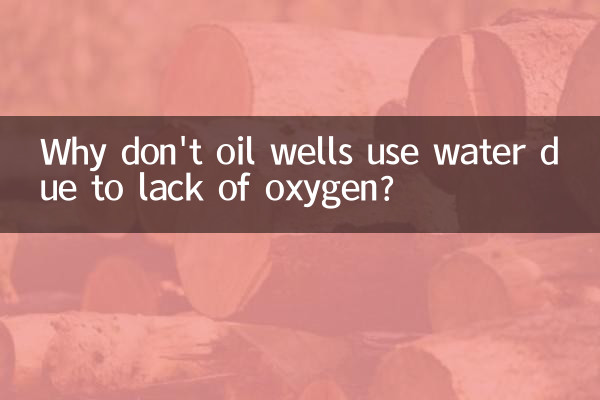Why don't oil wells use water due to lack of oxygen?
In the process of oil extraction, the way oil wells are operated has always been the focus of the industry. Recently, there has been widespread discussion about why oil wells do not use water due to lack of oxygen. This article will combine the hot topics and hot content on the Internet in the past 10 days, analyze this issue from three dimensions: technology, economy and environment, and display relevant background information through structured data.
1. Analysis of technical reasons

During the oil well production process, gas (such as carbon dioxide or nitrogen) is usually selected as the displacement medium instead of water in operations in anoxic environments. The main reasons are as follows:
| Technical indicators | gas displacement | water displacement |
|---|---|---|
| Penetration requirements | Low | high |
| Formation damage risk | smaller | Larger (may cause clay expansion) |
| Increased recovery | 15-25% | 5-15% |
| Working depth adaptability | Suitable for ultra-deep wells (>3000 meters) | Limited to medium and shallow layers (<2000 meters) |
2. Economic comparison
According to recent industry reports, although gas displacement requires higher investment in equipment, its overall cost is more advantageous:
| cost item | Gas displacement (USD/barrel) | Water displacement (USD/barrel) |
|---|---|---|
| Initial equipment investment | 2.8-3.5 | 1.2-1.8 |
| Operation and maintenance costs | 0.6-0.9 | 1.1-1.4 |
| Wastewater treatment costs | 0 | 0.3-0.5 |
| comprehensive cost | 3.4-4.4 | 2.6-3.7 |
Note: Data comes from the latest report of the Society of Petroleum Engineers (SPE) in 2023
3. Environmental influencing factors
Recently, the topic of environmental protection has become more popular, and the environmental advantages of gas displacement have been highlighted:
| Environmental indicators | gas displacement | water displacement |
|---|---|---|
| water consumption | 0m³/day | 500-2000m³/day |
| Risk of formation contamination | Low (recyclability rate >80%) | Medium to high (chemical additive residue) |
| Carbon intensity | 0.2-0.3 tons CO₂/barrel | 0.4-0.6 tons CO₂/barrel |
4. Industry trends
Hot events in the past 10 days show:
1. Saudi Aramco announced the world’s largest CO₂ flooding project in the Ghawar oil field (August 15)
2. U.S. shale oil companies generally use nitrogen displacement technology to deal with drought problems (August 18)
3. China achieved breakthrough in testing ultra-deep well nitrogen flooding in Tarim Oilfield (August 20)
5. Future trends
According to interviews with industry experts and recent technical white papers:
• The global gas displacement technology market is expected to reach $2.7 billion in 2025, with an annual growth rate of 12.3%
• Digital control system increases gas displacement efficiency by 40% (new breakthrough in 2023)
• Carbon capture and storage (CCUS) technology will promote the proportion of CO₂ flooding to increase from the current 15% to 30%
in conclusion:In an anoxic environment, oil wells choose gas instead of water as the displacement medium, which is the result of the three factors of technical feasibility, economy and environmental protection. As technology advances and environmental protection requirements increase, this trend will continue to strengthen.

check the details

check the details